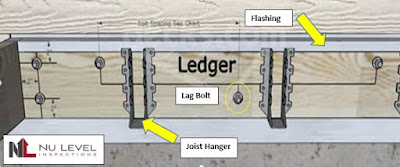Home Inspections and Building Diagnostics
Signs of a bad renovation
Each year, homeowners take on home remodeling projects both large and small. Some of these projects are DIY improvements, like painting or adding a kitchen back-splash, and others are major renovations.
As a home inspection firm, we inspect many homes that have had varying degrees of renovations, done with varying degrees of success. Some are top notch professional jobs, while others were done with no clear sense of direction, skill or budget. So, as a home buyer, how do you know if the house you are looking at has been renovated properly?
Things to look for:
1) Permits - If the house is being advertised as "newly renovated", then there should have been permits taken out for any electrical, plumbing, structure, gas line etc. modifications that wold have been done during the renovation. Safety codes officers typically put a sticker on the electrical panel, and sign and date it if the work has been done to meet current building code. If you don't see a sticker, contact your local jurisdiction to see if any permits were pulled for that property.
2) Poor finishes - Look at things like baseboards, window and door trim, drywall work, paint, flooring etc. If the finish carpentry work is sloppy, (details you can see), that can be a good indication to the quality of work inside the walls (details you can't see).
Perfect! Ready for paint!
Oops. Oh well, good enough.
Cheap Building Materials - When you walk into a property, it may look beautiful at first glance, but a closer look at each room reveals laminate counter-tops that are made to look like granite, textured wallpaper that’s looks like a back-splash, cheap cabinets, a plastic chandelier, pot lights not rated for use near insulation etc. One of the biggest mistakes that people make when renovating, is they try to be cheap when they buy materials. The bottom line is, you get what you pay for.
Old furnace and water heater - It's just as important that the plumbing, heating, and electrical equipment are as up to date as the rest of the renovation. I've met lots of buyer's who were blown away by a flawless renovation, but never thought to check the utility room. They are shocked when during the home inspection we find the furnace, electrical panel and water heater are old, inefficient, and way past their intended life expectancy. All of a sudden that "newly renovated" home needs $7000 - $10,000 worth of utility upgrades (depending on the size of the home) that no one was expecting.
There are many other areas of the home that a good home inspector will check during the course of their inspection, but these are a few easy things that anyone can look for.
Check us out online for more information on Home Inspections!







































